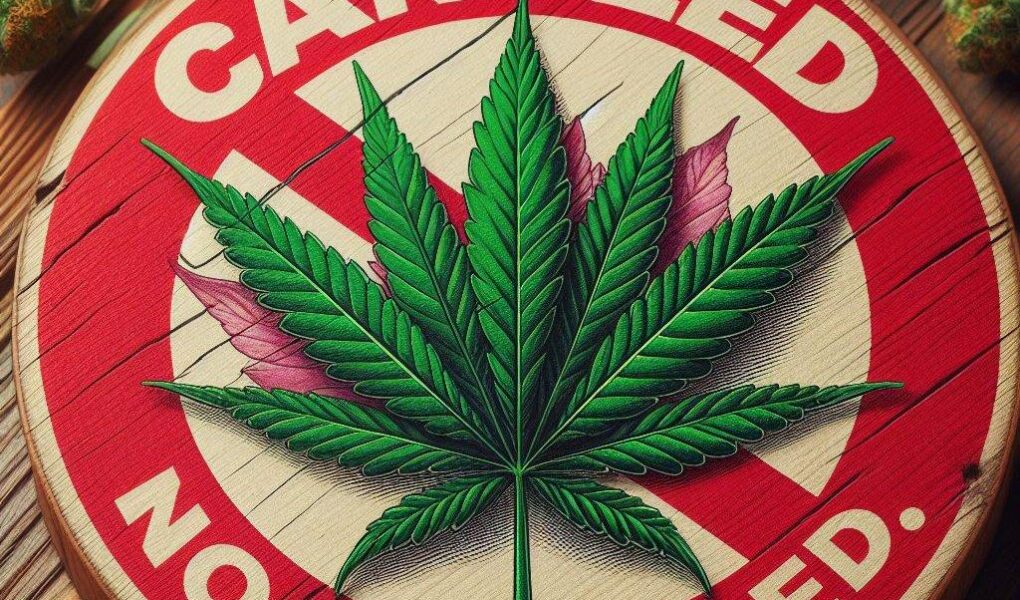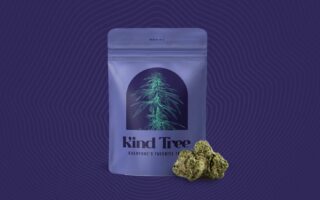Is Weed a Plant? An Exploration of Nature’s Green Conundrum
In the rich tapestry of the natural world, few subjects incite as much curiosity and controversy as the leafy green known as “weed.” Often depicted in pop culture as a rebellious symbol of freedom or a misunderstood herb steeped in centuries of medicinal history, the term encompasses a range of botanical varieties, most famously Cannabis sativa and Cannabis indica. But what truly qualifies this flowering plant as “weed”? Is it merely a label that denotes its illicit status or is there a deeper botanical significance? As we embark on this exploration, we will unravel the complexities surrounding the definition of weed, its classification within the plant kingdom, and the intricate relationship it shares with humans. Join us as we sift through the myths and facts, shedding light on whether our perceptions align with reality in the ever-evolving narrative of this multifaceted flora.
Table of Contents
- Understanding the Botanical Classification of Cannabis
- Exploring the Versatile Uses of the Cannabis Plant
- Examining the Environmental Impact of Cannabis Cultivation
- Recommendations for Sustainable Cannabis Gardening Practices
- Q&A
- To Conclude
Understanding the Botanical Classification of Cannabis
The botanical classification of cannabis is not as straightforward as some might think. This intriguing plant belongs to the family Cannabaceae, which includes just a handful of other genera. The primary species of cannabis are categorized into three main types: Cannabis sativa, Cannabis indica, and Cannabis ruderalis. Each of these species exhibits distinct characteristics, such as growth patterns, leaves, and chemical profiles, contributing to their unique uses in medicine, industry, and recreation. In addition to these species, hybrid varieties have emerged, resulting from cross-breeding processes that combine traits from different cannabis types.
In botanical terms, cannabis plants are classified as angiosperms, or flowering plants, which further places them in the larger category of Dicotyledons. The surprising array of strains and varieties manifests in numerous forms, each offering distinct cannabinoid and terpene profiles. For a clearer perspective, a simple table detailing the primary cannabis species and their key attributes can enhance our understanding:
| Species | Typical Effects | Common Uses |
|---|---|---|
| Cannabis sativa | Uplifting, energizing | Daytime use, creative pursuits |
| Cannabis indica | Relaxing, calming | Evening use, pain relief |
| Cannabis ruderalis | Mild effects | Breeding, low THC applications |
Exploring the Versatile Uses of the Cannabis Plant
The cannabis plant, often associated solely with recreational use, boasts a plethora of applications that extend far beyond mere enjoyment. One of the primary gifts of this versatile plant is its fiber, which can be turned into textiles, paper, and biodegradable plastics. Historically, hemp has been utilized for centuries in various cultures; its sturdy fibers are not only strong but also environmentally friendly, making it a sustainable choice for numerous industries. Additionally, the seeds of the cannabis plant are nutritional powerhouses, packed with essential fatty acids, protein, and vitamins, and are increasingly being incorporated into health foods and dietary supplements.
Moreover, the medicinal properties of cannabis have garnered significant attention in recent years, leading to increased research and acceptance within the medical community. Cannabinoids, the active compounds found in cannabis, interact with the body’s endocannabinoid system, offering potential relief for a range of conditions. These include, but are not limited to, chronic pain, anxiety, and epilepsy. A growing number of patients are turning to cannabis-based therapies as alternatives or complements to traditional pharmaceuticals, highlighting the importance of understanding this plant’s multifaceted role in modern healthcare.
Examining the Environmental Impact of Cannabis Cultivation
The cultivation of cannabis has drawn significant attention not only for its economic potential but also for its environmental consequences. Water usage is a critical factor; cannabis plants require extensive irrigation, often leading to depletion of local water sources. In regions where cannabis is grown commercially, elevated water demand can strain already fragile ecosystems, particularly in areas prone to drought. Moreover, the use of chemical fertilizers and pesticides during cultivation may result in runoff that contaminates nearby soil and waterways, disrupting local flora and fauna. The cumulative effects can be detrimental, causing a ripple effect throughout the ecosystem.
Additionally, land use for cannabis farming often leads to deforestation or alteration of natural habitats. As more growers seek to expand their production, natural landscapes are converted into monoculture farms, which reduces biodiversity. The environmental footprint is also influenced by the method of cultivation; indoor farming operations, while efficient in terms of space and controlled environments, consume vast amounts of electricity, further contributing to carbon emissions. Considerations about the ecological impact of cannabis can significantly inform the regulations and practices surrounding its cultivation, promoting a more sustainable approach to this increasingly popular plant.
| Environmental Factor | Impact |
|---|---|
| Water Usage | Excessive irrigation can deplete local sources. |
| Pesticides & Fertilizers | Runoff can contaminate soil and waterways. |
| Land Use | Conversion of natural habitats leads to loss of biodiversity. |
| Energy Consumption | Indoor cultivation increases carbon emissions. |
Recommendations for Sustainable Cannabis Gardening Practices
Embracing sustainable practices in cannabis gardening not only benefits the environment but also enhances the quality of the final product. One effective approach is utilizing organic fertilizers, which improve soil health and promote strong plant growth without the negative impacts associated with synthetic alternatives. Additionally, consider implementing companion planting techniques; pairing cannabis with certain plants can help deter pests and attract beneficial insects, creating a balanced ecosystem in your garden. Other recommendations include:
- Mulching: Retain soil moisture and suppress weeds.
- Water Conservation: Use drip irrigation systems to minimize water waste.
- Crop Rotation: Plant different crops in succession to prevent disease buildup and improve soil fertility.
It’s also crucial to focus on energy-efficient practices when planning your grow operation. Integrating renewable energy sources, such as solar panels, can significantly reduce your carbon footprint. When it comes to pest management, opt for natural remedies over chemical pesticides. Techniques like introducing natural predators or using organic sprays can maintain a healthy garden without harming the environment. Consider the following sustainable methodologies:
| Practice | Benefit |
|---|---|
| Use of Cover Crops | Enhances soil health and prevents erosion. |
| Composting | Reduces waste while enriching soil. |
| Natural Pest Control | Safeguards plants without chemicals. |
Q&A
Q&A: Is Weed a Plant?
Q: What exactly is “weed”?
A: Weed is a colloquial term that generally refers to cannabis, a group of flowering plants in the Cannabaceae family. This family includes three primary species: Cannabis sativa, Cannabis indica, and Cannabis ruderalis. So yes, weed is, in essence, a plant!
Q: What makes cannabis distinctive as a plant?
A: Cannabis plants are unique due to their compound-rich structure. They produce cannabinoids, the most well-known being THC (tetrahydrocannabinol) and CBD (cannabidiol). These compounds interact with the human endocannabinoid system, giving cannabis its characteristic psychoactive and therapeutic effects.
Q: Are all weeds cannabis?
A: Not at all! While “weed” can colloquially refer to cannabis, it is also used to describe any unwanted plant that grows in a garden or lawn. In botanical terms, a weed is generally defined as a plant in the wrong place, so “weeds” can be anything from dandelions to clovers—none of which classify as cannabis.
Q: How does cannabis grow?
A: Like other plants, cannabis grows through a life cycle that includes germination, seedling, vegetative, and flowering stages. It thrives in various climates but prefers well-drained soil and plenty of sunlight. The plant can grow as tall as 20 feet, depending on the species and growing conditions.
Q: Is cannabis considered a legal plant?
A: The legality of cannabis varies widely across the globe. Some countries have fully legalized cannabis for recreational and medicinal use, while others strictly prohibit it. In places where it is regulated, cannabis is often cultivated, sold, and consumed under specific guidelines, much like any other agricultural crop.
Q: Can you grow weed in your own garden?
A: That depends on your local laws! In states or countries where cannabis is legal, individuals can typically grow a limited number of plants for personal use. Enthusiasts often delight in cultivating their own cannabis species, but one should always check the regulations in their area before embarking on this green journey.
Q: What are the benefits of cannabis as a plant?
A: Beyond its use as a recreational substance, cannabis has a variety of benefits. Numerous studies suggest that CBD may aid in relieving pain, inflammation, and anxiety. Additionally, industrial hemp (a cannabis cultivar) is used for textiles, biodegradable plastics, and even edible seeds, showcasing cannabis’s versatility as a plant.
Q: Is weed just another plant in the ecosystem?
A: While cannabis is part of the vast plant kingdom, its relationship with humans sets it apart. Cultivated for various uses—recreational, medicinal, and industrial—cannabis has historical significance and continues to evolve within human societies. However, like all plants, it plays a role in its ecosystem, contributing to biodiversity and the food web.
Q: is weed just a plant?
A: Indeed, weed, or cannabis, is technically a plant, but it carries rich cultural significance and a myriad of uses that elevate it beyond the ordinary. Its unique traits and effects contribute to an ongoing dialogue about its role in society, health, and the environment, solidifying its place in both botanical and cultural discussions.
To Conclude
the question of whether weed is merely a plant invites us to explore the intricate relationship between nature and humanity. At its core, cannabis is indeed a botanical entity, a member of the Cannabaceae family, flourishing alongside countless other flora that grace our planet. Yet, its significance transcends the scientific classification; it intertwines with cultural, medicinal, and social narratives that have shaped human experience for centuries. As we navigate the shifting perceptions and legal landscapes surrounding cannabis, it becomes essential to acknowledge its botanical roots while also understanding the complexities that come with it. Ultimately, whether one views weed through the lens of horticulture or societal impact, the discourse surrounding it sheds light on our broader conversation about plants, purpose, and potential. As we continue to unravel the layers of this multifaceted species, we are reminded that sometimes, the simplest questions reveal the most profound truths.



